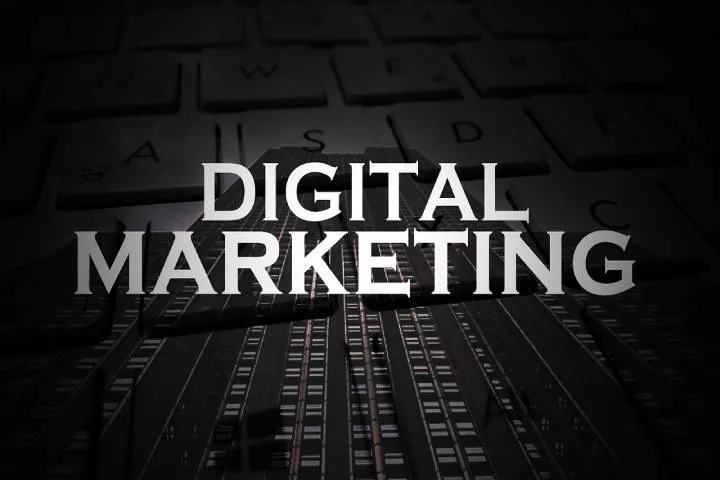Big Data
What is Data Visualization?
Which image gives you a better idea of the data represented? Most people would get a clear view of the second image. This is something data visualization is all about. It is merely the representation of data in graphical form.

“There is magic in graphs. The profile of a curve reveals in a flash a whole situation — the life history of an epidemic, a panic, or an era of prosperity. The curve informs the mind, awakens the imagination, convinces.” – Henry D. Hubbard
Whenever you are given a lot of information, you may be converting it into tabular form to get an easy understanding. Data is essential only when you can get insights from it, and else it is redundant.
Which image gives you a better idea of the data represented? Most people would get a clear view of the second image. This is something data visualization is all about. It is merely the representation of data in graphical form.
If we have a small data set, understanding it in a tabular form is secure. But if the amount of data is enormous, assuming it becomes too complicated, hence a need to visualize it. By using representations like charts, graphs, or maps, you get an accessible way to understand the trends and patterns in the data.
It is a personal tendency to get attracted to colors and patterns rather than standard text. The human brain is quick to differentiate between green and red, or square and circle. Visual effects create a better impression on our minds.
For example, a process explained through animations is understood quicker compared to that described in a book. This is why data visualization is essential for people as well as businesses.
Today, companies believe in making data-driven decisions as it allows them to meet customer needs and develop best-in-class products.
Rising technologies like Artificial Intelligence, Machine Learning, and Data Analytics have made data visualization more critical than ever.
Data visualization helps in converting trillions of rows of data generated into a form that is easy to understand, and through which we can find growth patterns, profit/loss, Return on Investment (ROI), total sales, and a lot more information that can be conveyed to stakeholders.
Read on to know why data visualization is essential, its types, data visualization tools, and why taking Tableau course training should be your next career move.
Table of Contents
1. Importance of Data Visualization
Whether you are working in retail, banking and finance, marketing, sales, education, eCommerce, or even in governmental organizations, data visualization is crucial to communicate information clearly and efficiently. It is also one of the steps in the process of data science.
The data science process involves collecting data, processing, and modeling it, and after that, the data should be visualized to draw conclusions and make better decisions.
Data Visualization has witnessed continuous growth over the past few years. The global data visualization market which was worth USD 4.51 billion in 2017 is expected to reach USD 7.76 billion by 2023, at a Compound Annual Growth Rate (CAGR) of 9.47 percent over the forecast period of 2018 to 2023.
The driving factor of data visualization is the fact that there is an increasing emphasis on measuring the performance of every operation to check the daily progress.
2. Here are some of the points depicting the importance of data visualization:
Traditional descriptive statistics are not capable of giving insights from the massive amount of data that we generate today. It is a data visualization that gives improved insights.
Going through spreadsheets or reports is a tedious task that delays decision-making. Data visualization allows for quicker decisions by presenting complex data through interactive dashboards and graphs.
Data visualization can also be used to identify areas that need improvement, understand which factors affect consumer behavior, predict sales volume, and more.
Companies today are focusing more on big data and data analysis-related projects, and data scientists take the help of data visualization to ensure that the process is giving desired results.
Data visualization also gives an increased understanding of the next steps to be taken to improve the processes.
3. Types of Data Visualizations
Data can be visualized in various ways:
- Charts
- Tables
- Maps
- Infographics
- Graphs
- Dashboards
These mentioned ways again have sub-types like line charts, pie charts, treemaps, histograms, bullet graphs, dot distribution maps, heat maps, population pyramids, Gantt charts, and more.
4. Data Visualization Tools
Data scientists can achieve data visualization through many powerful tools:
- Tableau
- Qlikview
- Plotly
- Power BI
- Datawrapper
- Highcharts
- Sisense
Tableau is one of the numerous robust data visualization tools which can prove to be the most secure and flexible end-to-end analytics platform for your data. Here are the products that it offers:
Tableau Prep – It can be used to quickly combine, shape, and clean data and make it ready for analysis
Tableau Desktop – This is where the analytics happen. There are interactive dashboards to help you uncover hidden insights.
Tableau Online – This analytics platform is cloud-based, and you can access it anywhere or share the dashboards with stakeholders or clients.
Tableau Server – It allows the organization to run the tool in a trusted environment where the data and analytics are secured, and employers have the freedom to explore data.
Now that you know why data visualization is essential get ready to learn it. If you continue beginning a career in the field of Artificial Intelligence, Machine Learning, Data Science, or Big Data Analytics, then it is a must-have skill.
You can take a Tableau online course to gain hands-on experience with this powerful tool. Industry experts often make online courses, and they not only train you to design interactive dashboards but will also help you visualize data more effectively.
Big Data
How To Use Histogram Charts for Business Data Visualization
One such tool for data visualization that stands out for its simplicity and effectiveness is the histogram. Keep reading to learn more about histogram charts.

Data visualization is an indispensable tool for businesses operating in the contemporary digital era. It enhances the understanding and interpretation of complex data sets, paving the way for informed decision-making. One such tool for data visualization that stands out for its simplicity and effectiveness is the histogram. Keep reading to learn more about histogram charts.
Table of Contents
1. Understanding the Basics of Business Data Visualization
Alt text: A person looking at different data visualizations on a computer before looking at a histogram chart.
Business data visualization is a multidisciplinary field merging statistical analysis and computer science fundamentals to represent complex data sets visually. It transforms raw data into visual information, making it more understandable, actionable, and useful.
Visualization tools such as histogram charts, pie charts, bar graphs, and scatter plots offer businesses a way to understand data trends, patterns, and outliers—essentially bringing data to life.
Whether you’re analyzing sales performance, forecasting market trends, or tracking key business metrics, data visualization can be a powerful tool for presenting data that might otherwise be overlooked.
2. Deciphering the Role of Histogram Charts in Data Analysis
Histogram charts are a superb tool for understanding the distribution and frequency of data. They are bar graphs where each bar represents a range of data values known as a bin or bucket. The height of each bar illustrates the number of data points that fall within each bucket.
Unlike bar graphs that compare different categories, histogram charts visually represent data distribution over a continuous interval or a particular time frame. This makes them invaluable for many business applications, including market research, financial analysis, and quality control.
By portraying large amounts of data and the frequency of data values, histogram charts provide an overview of data distribution that can aid in predicting future data trends. It helps businesses to spot patterns and anomalies that might go unnoticed in tabular data.
3. Key Steps To Create Effective Histogram Charts
Creating effective histogram charts involves steps, starting with data collection. You need to gather relevant and accurate data for the phenomenon you’re studying.

Next, you determine the bins and their intervals. Bins are data ranges, and their number depends on the level of detail you want from your histogram. It’s essential to keep bins equal in size to facilitate comparison.
Once you’ve structured your data and decided on the number of bins, the next step is to count how many data points fall into each bin. This is the basis of your histogram.
Finally, you draw the histogram with the bins on the x-axis and the frequency on the y-axis. Each bin is represented by a bar, the height of which represents the number of data points that fall into that bin.
4. Advantages of Using Histogram Charts for Business Data Visualization
Alt text: A person on a computer looking at multiple screens with histogram charts.
Histograms offer a host of advantages in the realm of business data visualization. They provide a clear, visual summary of large data sets, making it easier to digest and comprehend the data.
Histograms are also useful in identifying outliers or anomalies in data, which can be significant in industries such as finance and quality control, where an anomaly could signify a significant issue that needs to be addressed.
5. Real-world examples of Business Data Visualization Using Histogram Charts
Many businesses use histograms to visualize data. For instance, a retail company may use histograms to analyze customer purchase patterns, enabling them to identify peak shopping times, seasonality, and trends in customer preferences.
A manufacturing company might use histogram charts to monitor product quality. By analyzing the frequency of defects, they can identify the cause of the problem and take corrective actions faster.
Histograms are also widely used in the financial industry. Financial analysts use histogram charts to visualize the distribution of investment returns, helping them to understand the risk associated with an investment.
Histogram charts are crucial in business data visualization, offering clear and concise representations of large data sets.

 Instagram3 years ago
Instagram3 years agoBuy IG likes and buy organic Instagram followers: where to buy them and how?

 Instagram3 years ago
Instagram3 years ago100% Genuine Instagram Followers & Likes with Guaranteed Tool

 Business5 years ago
Business5 years ago7 Must Have Digital Marketing Tools For Your Small Businesses

 Instagram4 years ago
Instagram4 years agoInstagram Followers And Likes – Online Social Media Platform





















